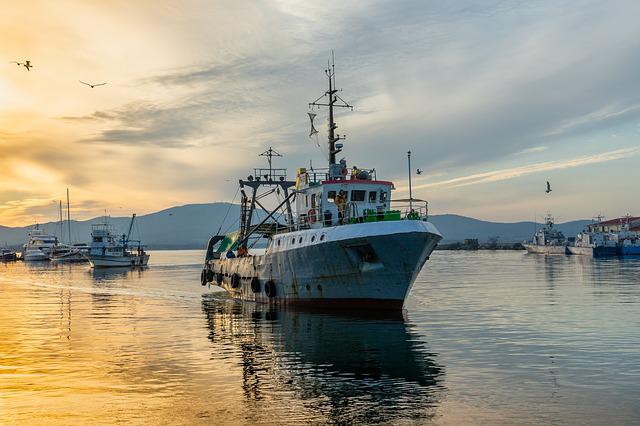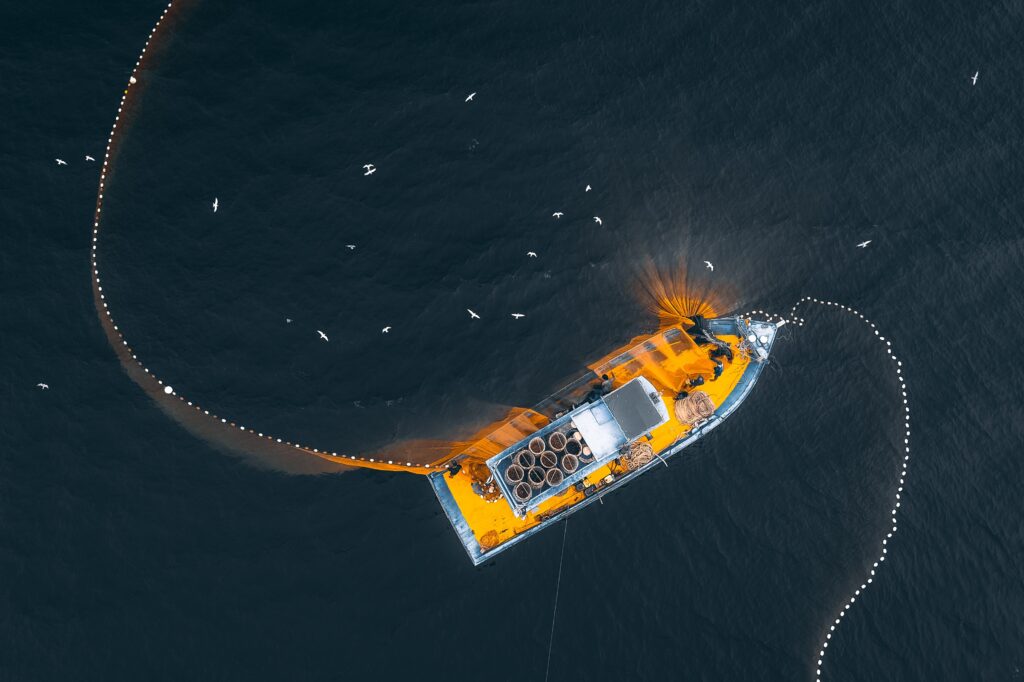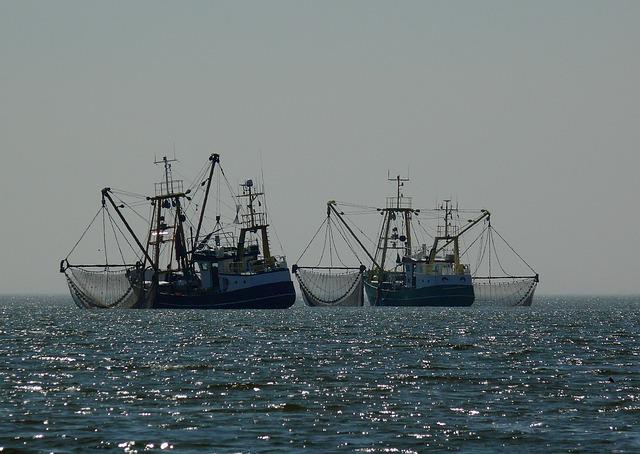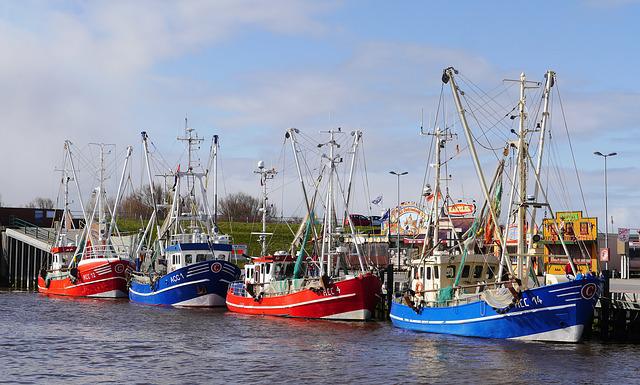According to Statista, the fishing industry is expected to generate over $544 billion in revenue by the end of 2022, up from $401 billion in 2018. Despite the growth, the fishing industry is among the few industries still lagging behind when it comes to adopting cutting-edge technologies like AI, cloud computing, AR/VR, and more. Most of the businesses in this industry still rely on traditional methods to do most of their operations.
In today’s article, we will discuss how technology could be used to improve day-to-day operations in this industry. Some of the strategies we are about to share are already being used by savvy fishing businesses and individuals. Without any further ado, let’s jump right in!
Use of Smart Boats in Fishing

A smart boat is basically like any fishing boat with several digital tools/equipment to ease the fishing process. On the ordinary boats that are used for fishing today, almost everything is done based on the fisherman’s experience and sometimes guesswork. This makes it nearly impossible for someone new in this game to catch a single fish.
It is the experienced fishermen that can quickly determine where to throw the net and when to pull it out of the waters after catching enough fish. Sometimes the experience fishermen may also not be so accurate at predicting the best location of the fish or when it is best to pull the net out of the waters. This can all be solved by using smart boats.
Components of a smart boat
1. High-tech video cameras
These are high-resolution cameras mounted beneath the boat to capture high-resolution videos of the waters as the boat moves around. This makes it easy for the people on the boat to see the location of the fish and how it is getting into the net. With this clear view, fishermen can also accurately choose the appropriate time to get their nets out of the waters.
2. GPS antenna
This antenna enables the crew on the boat to precisely navigate the waters with a clear sense of direction. It also allows the team back at the shores to quickly locate the fishing boats whenever the need arises. Having a GPS antenna is also back up to the maps applications that rely on cellular networks to work.
3. Onboard computer
A smart boat needs to have an onboard computer to leverage advances in data analytics to process and analyze more data onboard and in real time. These computers can also be used to improve image processing especially in non-clear sea waters where the footage from the cameras is not very clear.
4. Satellite and cellular modems
The sea areas usually don’t have cellular network coverage. That is why it is important to have a satellite alterative. With satellite, the crew on the boat will still have access to internet in regions of the sea that don’t have access to the mainstream cellular networks. This network is need by the onboard computer to do certain task that requires using data on the cloud. It also allows fishermen to stay connected with the rest of the world as they don’t do their work.
Using Artificial Intelligence Technologies in Fishing
The footage from cameras on smart fishing boats enables scientists and authorities to determine the number of fish caught, the different species, their weight, and several other useful details. These tasks can be very tiresome and boring if they are done by humans. It would take days for a human to analyze footage from the different boats.
With AI, computer vision and machine learning, this footage can be fed into a sophisticated algorithm that can generate all this useful data for us. These algorithms can be trained to identify the different fish species by simply looking at their shape and other physical features.
These technologies can also be used to determine the weight of the fish. Determining the weight is done by using the dimensions of the fish. However, the accuracy of these algorithms entirely depends on how much data they are fed. It also depends on the clarity of the videos captured by the smart boat cameras.
The fishing data generated by AI and machine learning can be used by authorities to ensure proper fishing standards are followed by all fishermen. Authorities and other stakeholders can also use this data for planning purposes and putting in place the necessary conditions to aid better fish species to grow and multiply in number faster.
Using IoT Devices in fishing
Internet of Things (IoT) is one of the technologies that is being embraced in the fishing world. IoT devices are attached to fishing boats to collect a vast amount of data that may include the temperature of the water, PH, electric conductivity (EC) and more. Scientists can use this data to determine the general changes in the water conditions and how they could affect the future of fishing.
IoT devices can also be used for feed optimization in artificial fishing. These sensors are put in the waters to collect data about the amount of food available in the water at any given time. This data is then used to determine the optimal amount of food that should be added to the water for the fish to feed. This eventually eliminates the possibility of underfeeding or overfeeding the fish.
It also lowers the labor costs since you no longer have to hire individuals to manually check the amount of food available in the artificial fishing pond. These devices can also be used to monitor the health of the fish in the bond. IoT devices can determine the overall health of the fishes in your pond by simply monitoring their activity and feeding behavior.
Using Smart Lighting Tech to Catch Specific Fish Species

SafetyNet Technologies, a startup based in the UK, has developed a smart LED lighting system that can be attached to fishing nets to enable fishermen to catch better fish species. The LED lighting system is attached to the fishing gear and can change between different colors and intensities using behavioral response to light to target specific species.
Precision fishing enables the fishermen to look for specific kinds of fish based on the demand on the market. It also eliminated the chances of overfishing, which can potentially lead to shortages in the future. Of course, this technology is not yet mainstream, but it could revolutionize the industry if it is well-utilized by the different stakeholders.
Using Blockchain Technology to Police the Fishing Industry

The fishing industry still has a huge number of people and companies who engage in illegal fishing practices such as overfishing. These practices can be fought by documenting the entire journey of the fish from when it is got from the waters to the final consumers in restaurants and homes.
Just imagine being able to scan a pack of fish in the supermarkets and getting all the details of where it is from and probably the exact boat that was used to catch it. This data can be captured and stored using a blockchain database. The blockchain is open to the general public, so anyone can access it whenever needed.
The blockchain’s immutability makes it impossible to change the data. This makes it the most reliable and trusted database to store data about the fish’s journey. A startup called Traceable Solutions is already using this technology to track the journey of different fish packages to foster greater transparency and better returns for communities.
eCommerce Tech Connects Fish Sellers and Buyers

eCommerce platforms dedicated to fish and other seafood make it easy for business people in the fish industry to find a market for their fish. Fishermen can also use these platforms to determine what the other sellers charge for similar fish products. This enables them to determine the best price to sell their fish products.
These platforms can also be used to buy equipment and other inputs that are required for day-to-day fishing operations. Major eCommerce sites like Amazon have thousands of listings for fishing inputs tools/equipment that fishermen need to do their job.
Real-Time Access to the Latest Information in the Industry

Just like any other industry, stakeholders in the fishing sector need to be aware of the trends in their industry to avoid being left behind. Platforms like the Global Fish Watch are dedicated to providing stakeholders in the fishing industry with the latest news and information that could affect their day-to-day operations.
There are also several private and public groups on social media sites like Facebook that people in this industry can use to share ideas and vital information. If you are into fishing, joining these groups can be very helpful.
Challenges With Adopting Tech Solutions in the Fishing Industry

Despite the emergence of several technologies that can be used to boost the productivity and effectiveness of operations in the fishing industry, there are a couple of challenges that need to be addressed if these technologies are to have a lasting impact. Let’s take a look at some of these challenges.
Limited Access to the Internet

A considerable section of the sea areas still doesn’t have access to cellular networks. This makes it hard to use technologies such as smart boats that require reliable internet connectivity to do most of their tasks. Satellite internet is the alternative to cellular networks, but its price and bandwidth make it a less ideal solution.
The good news is that some big companies, such as SpaceX, are already investing billions in solving this problem. SpaceX, through its StarLink project, has already connected over 400,000 people around the world. The main goal of StarLink was to avail internet to areas that don’t have access to the mainstream broadband internet. Most telecom companies don’t find it profitable to deploy their network infrastructure in the sea areas.
Dirty Water Bodies Limit Fishing Tech

Most of the technologies used in fishing rely on cameras to capture videos of fish as they get into the net. Getting a clear video is nearly impossible if the water where the fishing is being done is dirty. Dirty water may also affect the lifetime and functionality of the sensors and cameras used on smart boats.
Most Fishing Tech Solutions Are Still In Their Early Stages of Development

As we saw in the previous section of the article, the use of technologies, including artificial intelligence and cloud computing, in this industry is still in the early stages. Remember, most of these cutting-edge technologies get better at providing accurate results the more data they are fed.
For instance, the AI and machine learning models used to determine the size and weight of fish from video footage need huge amounts of data to provide accurate results. It also requires capturing footage from different angles to make it easier for these models to view the fish collected from different angles.
Fishing Equipment With New Tech is Still Expensive

The cost of buying smart boats equipped with sensors and onboard computers is pretty high. This limits low-income fishermen from embracing these technologies. Small business owners in this industry will likely have to wait for these technologies to get cheap before they start using them.
Final thoughts
Technology has played a huge role in advancing the fishing industry. Despite being in the early stages, technologies like AI, IoT, and eCommerce will likely have a huge impact on how this industry is run. However, the responsible stakeholders need to find solutions to the challenges discussed above for this industry to enjoy the full benefits of technology.



